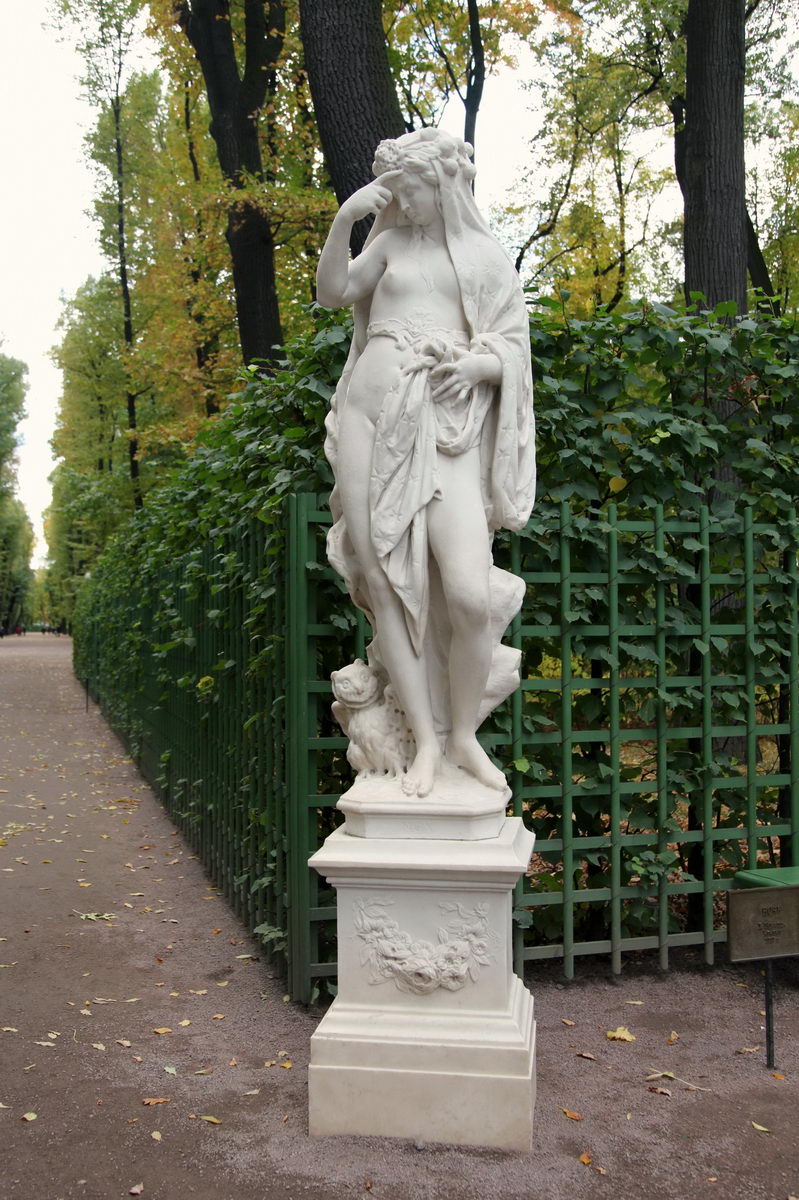


Серия скульптур «Круговорот суток» выполнена талантливым скульптором Джованни Бонацца.
Ночь и утренняя заря, полдень и закат, сменяя друг друга, отмечают на земле извечный круговорот суток. Об этом и повествует лучшая скульптурная группа Летнего сада.
Молодая женщина в звездном покрывале – «Ночь». Ее голова украшена венком из цветов мака (мак – символ сна). На нарядном поясе женщины – летучая мышь, у ног сидит сова – неизменная спутница тьмы, символ ночи. Иногда сова (уже в христианстве) – символ смерти. Глаза женщины закрыты, а лицо печально и задумчиво. По античной мифологии Ночь – дочь Хаоса, который предшествовал всему миру. От соединения Ночи с Эрэбом (Эрэб – первобытный мрак) родились День и Эфир, встречи с которыми Ночь боится. Поэтому женщина погружена в скорбь, горько опущены уголки ее губ, низко склонилась голова.
Итальянский скульптор венецианской школы.
Работал в Тревизо, Падуе, Венеции. Испытал влияние Ф. Пароди, от которого унаследовал живую, динамическую передачу пластики тел и одежд, но придавал образам большую миловидность и изящество в духе рококо. Основные работы в Венеции. В России имеется ряд работ, приписываемых Дж. Бонацца: статуи Ночь, Аврора, Полдень, Закат (1716–1717), Дельфийская сивилла (Летний сад) и Ливийская сивилла (г. Пушкин), бюсты – аллегории месяцев (г. Пушкин), статуи "Адам" и "Ева" для одноименных фонтанов в Петергофе.

|
A series of sculptures “Circle of Day” was performed by a talented sculptor Giovanni Bonazza. Night and sunrise, midday and sunset, following one another, mark the everlasting circle of day and night on the earth. Shining “Aurora”, radiant “Midday”, gloomy “Sunset”, wise thoughtful “Night” allegorically depicted four times of the day and were meant to be established on the roof of the Grotto. An album of painting was preserved, sort of an accompanying document, in which an unknown Italian painter pictured statues and busts ordered by Peter the Great in Italy. The names of the sculptures and the masters who created them are mentioned in this album. On the paintings from this album the sculptures depicting times of the day are featured with wings, but their wings were not preserved. The goddess “Nyx” (Night) is depicted as a young woman wrapped in a starry coverlet with a crown of poppies on her head: poppies bring sleep. A bat is featured on her waist and a night bird, an owl, is sitting at her feet. The woman’s eyes are shut, her face is sad and thoughtful. According to the classical mythology, Nyx is a daughter of Chaos that preceded the whole world. From Night’s union with Erebus (Erebus – primeval darkness) Day and Aether were born, whom Nyx fears to meet. That is why the woman is sunk in sorrow, the corners of her lips are lowered bitterly, her head is hung low. This excellent statue conveys the feeling of stillness and silence |
An Italian sculptor of the Venice school.
Worked in Padua, Venice. Experienced the influence of F. Parodi, from whom he inherited a lively, dynamic manner of reproduction of bodies and clothes’ plastic, but gave his images great loveliness and the rococo-spirited elegance. Major works in Venice. In Russia there is a number of works attributed to G. Bonazza: statues Night, Aurora, Midday, Sunset (1716–1717), Delphi Sevilla (Summer Garden) and LibianSevilla (Pushkin), busts – allegories of the months (Pushkin), statues “Adam” and “Eve” for the fountains of the same names in Peterhof.



